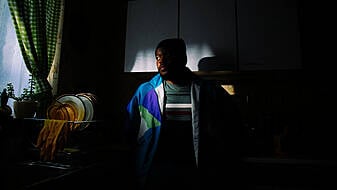Deputy chief medical officer Dr Heather Burns appealed for people to stay at home and adhere to public health guidance as the country’s incident rate exceeded 300 per 100,000 population for the first time since the onset of the pandemic.
Dr Burns said: “The 14-day incidence was at three per 100,000 at the end of June, today it is 302 per 100,000 population.
“The risk of you being exposed to Covid-19 is now 100 times greater than it was four months ago.
“Please limit your risk by staying at home and following public health advice.”
She added that the positivity rate in schools is 2.8%, compared with 13% in the general public, which supports the position that schools are not prime environments for the spread of the disease.
It comes as a further 1,066 cases of Covid-19 were confirmed by the Department of Health on Thursday.
Three more deaths linked to the virus were also reported.
Over the past 14 days, 14,404 cases have been notified to the Department of Health.
The five-day moving average is now 1,160 cases per day.
Among cases notified in the last 14 days, the median age was 31.
Some 69% of the cases were in people aged under 45 and 8% were in people aged 65 and older.
The latest public health data found a total of 116,640 tests have been conducted over the past seven days. The positivity rate is 6.9%.
There were 313 patients with Covid-19 in hospital as of 2pm on Thursday, including 37 patients with the virus in critical care units.
Dr Burns said there were 649 new outbreaks notified in the week up to October 17, 71% of which were in private houses, 29% in other locations.
Six additional outbreaks in nursing home and community hospitals were confirmed. There are now 33 current outbreaks in these settings with 451 linked cases.
She said the latest figures also showed the number of deaths had continued to increase.
In the first three weeks of October there have been 60 deaths, 24 of which are linked to nursing home outbreaks.
Chief medical officer Dr Tony Holohan said the country was now at Level 5 restrictions because the disease is at “very serious levels in our country and posing a significant risk to public health”.
He reiterated his plea for anyone who had tested positive, or anyone who was awaiting a test or a test result, to self-isolate.
Dr Holohan asked everyone else to behave as if they are a close contact of someone with the virus, even if they are not, so that they limited interactions with others.
“We’re in effect asking everyone else to behave as though they are a close contact,” he said.
“In all circumstances other than for essential reasons to stay at home for the six-week period.
Asked at a briefing about the breakdown in the HSE’s contact tracing system, Dr Holohan said: “We’re not going to contact trace our way out of the scale of exponential growth we’ve experienced. We’ve had significant amount of infection occurring and very, very rapid increases in that over the period.”
He added that the HSE had done a “very significant job” in putting the system in place and that the “best defence against transmission of the disease” was people’s individual behaviour.
Dr Holohan said the system was challenged by the “scale of the infection that we have” and with cases heading to between 1,200 and 1,500 cases a day “it was a large burden of infection”.
He also said that as long as there is high transmission in the community, it will be impossible to protect nursing homes despite all the measures taken.
“It is simply not realistic to expect that we will protect nursing homes while we have the scale of infection spreading as it is in our population,” he said.
Professor Philip Nolan said the reproduction number was between 1.3 and 1.4 nationally.
“Our collective goal now is to suppress transmission of the virus and bring our case numbers to manageable levels,” he said.
“If we work hard together to get the reproduction number to 0.5, we should succeed in reducing cases to below 100 a day in six weeks’ time.”
He added that it was an “absolutely realistic target” and an “essential target” to get the reproduction number below one.
Prof Nolan also said the difference between this surge and the onset of the pandemic was that the “vast majority” of cases of coronavirus in the community were being detected, compared with earlier this year.
He said in March and April, only one in three cases were being detected.
Prof Nolan said they were catching milder and asymptomatic cases now and in a younger cohort who were less likely to be admitted to hospital and less likely to die, but he said they did not know the long-term effects they would suffer.
He added it was very important that these cases were detected because otherwise people unknowingly infect others.







